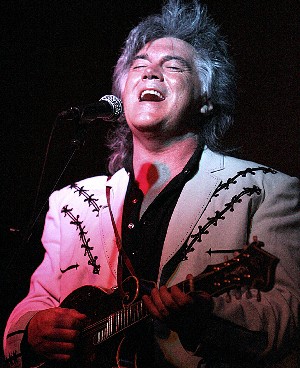

The lead single "This One's Gonna Hurt You (For a Long, Long Time)", also a duet with Tritt, was a top-ten hit in 1992, but the followup singles "Now That's Country", "High on a Mountain Top", and "Hey Baby" were less successful.

His next MCA album, This One's Gonna Hurt You, came out in 1992. This song's success also led to the two touring in 1992 as the No Hats Tour, a reference to the fact that unlike most contemporary country musicians, neither Tritt nor Stuart sported a cowboy hat. It also won Stuart his first Grammy Award, for Best Country Collaboration with Vocals that year. It would go on to become Stuart's highest chart entry, reaching number two on Hot Country Songs in early 1992. Recorded on the latter's 1991 album It's All About to Change, this song was released in between "Tempted" and "Burn Me Down". Jana Pendragon of AllMusic gave the album four-and-a-half stars out of five, comparing it to Dwight Yoakam's Hillbilly Deluxe in style and saying, "Stuart kicks country-pop in its well-defined hindquartersBut Stuart is just as deadly when he slows things down and does a ballad."Īlso in 1991, Stuart co-wrote a song with Travis Tritt called "The Whiskey Ain't Workin'". Kennerley and Kostas contributed as both songwriters and backing vocalists also performing backing vocals on some tracks were Billy Thomas and Ray Herndon, who were also recording on MCA in McBride & the Ride at the time. Bennett and Brown stayed on as producers, with the former also contributing alongside Stuart on both guitar and mandolin. The album charted four singles on Hot Country Songs between 19: "Little Things", "Till I Found You", "Tempted", and "Burn Me Down", of which all except "Till I Found You" reached the top ten. His second MCA album, Tempted, followed in 1991. Later that year, Stuart left Cash's band and landed a recording contract with Columbia Records. At the end of the session, Perkins presented him with his guitar. In 1985, Stuart accompanied Johnny Cash to Memphis and played on the Class of '55 album that also featured Carl Perkins, Roy Orbison, and Jerry Lee Lewis. The album was composed of a jam session that included a number of country and bluegrass performers such as Cash, Watson, and Earl Scruggs. In 1982, he released a second album called Busy Bee Cafe on Sugar Hill Records. After this, Stuart performed with Vassar Clements and Doc Watson before joining Johnny Cash's band in 1980. He continued to tour in this capacity until Flatt retired in 1978, and recorded an independent album called With a Little Help from My Friends that same year. While a member of this band, Stuart met mandolinist Roland White, a member of Lester Flatt's backing band White invited Stuart to perform with Flatt at a concert in Delaware in 1972, which led to him becoming a regular member of that band. Stuart learned to play guitar and mandolin as a child and, by age 12, he had joined a bluegrass band called The Sullivans.

See below for a taste.John Marty Stuart was born in Philadelphia, Mississippi, on September 30, 1958. A special book of Stuart’s photographs will be released this summer and can be pre-ordered here.

The exhibit is open to the public for free.
#Marty stuart tattoo series
Stuart’s work also includes portraits of some hilarious country-as-cornbread folks from backwoods America (see Knoxville girls below) and a fantastic series of shots of members of the Lakotas, a Native American tribe in South Dakota. On Friday, the man who toured with the likes of Lester Flat, Doc Watson and Johnny Cash launched American Ballads: The Photographs of Marty Stuart – an exhibition that will be on display at Nashville’s gorgeous Frist Center for the Visual Arts through November 2 nd.Īmerican Ballads features a wealth of candid photos of iconic country stars, including the last portrait of Johnny Cash, multiple shots Bill Monroe, other off-stage depictions of Roy Acuff, Steve Earle, Porter Wagoner, Doc Watson, Emmylou Harris and more. Honky tonk country music star Marty Stuart, who is mostly known for his fantastic hair, has been shooting images of the people and places around him since the age of 13. Cash, Last Portrait, September 8, 2003, Hendersonville, TN – Photo by Marty Stuart


 0 kommentar(er)
0 kommentar(er)
